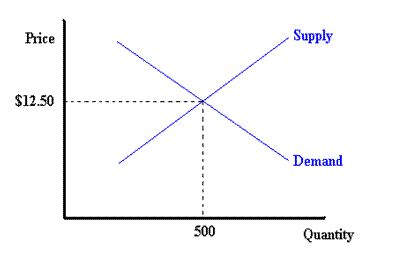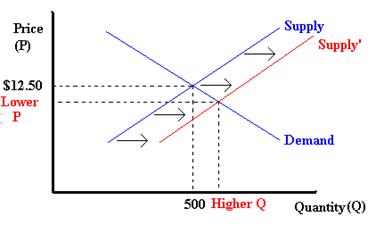Immigrant worker’s impact on the U.S economy is a somewhat ambiguous issue. Researchers believe that wage fluctuation is not discriminate to a particular labor sector, however, can have nation-exclusivity. This belief is cultivated in an economic journal titled The Impact of Immigrants on Host Country Wages, Employment and Growth. In this journal, the author’s state that “If the country receiving immigrants is a large one, the increase in output of labor-intensive goods spurred by immigration will reduce the world prices of goods.” 1This assertion describes a price-susceptible nation whose influx in output can jeopardize the world’s economic standing by a fall in priced goods. Obviously, the U.S is one of the larger countries contributing to over 730 Billion dollars worth of exports in the year 2003-04. Ultimately, this price reduction can have an adverse affect on U.S producers wherein their product’s economic worth in the world’s market is now reduced. However, a distinct economic blow is a native worker’s potential unemployment plight due to the influx of immigration.
The Journal continues to state that “the resulting cross-country differences in wages would then generate migration”, migration that the U.S is currently experiencing in large numbers. It continues by suggesting that “In this case, the impact of labor influx will then depend upon its size: a large enough inflow will force the country to move to more labor-intensive mix of products, which will lower wages (and increase the return to capital).” 1These excerpts display the clear role immigrant workers play on the U.S economy. As producers see the lowering wage positively affecting their potential capital, many employers succomb to hiring immigrant workers to enhance their financial gain.
Lastly, using a supply and demand graph, I will show how the increase of immigrant workers on labor-supply will result in a statistical decrease in wages and increase in quantity of workers. (All numbers are arbitrary and a conclusion could conceivably be reached using X’s and Y’s)
 The first graph shows a labor market where the equilibrium between the supply of workers and the employer’s demand for workers collides at a point (500, 12.50). This means that at a worker’s demand price of $12.50, employers choose to hire 500 workers at an agreed wage of $12.50.
The first graph shows a labor market where the equilibrium between the supply of workers and the employer’s demand for workers collides at a point (500, 12.50). This means that at a worker’s demand price of $12.50, employers choose to hire 500 workers at an agreed wage of $12.50.
 The second graph shows a labor supply graph in which has experienced an influx in the supply of workers available for hire. When a workers surge occurs, the supply curve shifts to the right. The demand curve stays fixed because workers do not dictate an employer’s demand for a particular job. Thus, the equilibrium now resides at a lower wage for workers hired and the companies can actually higher more workers which is shown by Higher Q (quantity of workers). Of course, they are not obligated to higher more workers and can conceivably still hire 500 and save the extra capital gained by a lower wage rate.
The second graph shows a labor supply graph in which has experienced an influx in the supply of workers available for hire. When a workers surge occurs, the supply curve shifts to the right. The demand curve stays fixed because workers do not dictate an employer’s demand for a particular job. Thus, the equilibrium now resides at a lower wage for workers hired and the companies can actually higher more workers which is shown by Higher Q (quantity of workers). Of course, they are not obligated to higher more workers and can conceivably still hire 500 and save the extra capital gained by a lower wage rate.